-
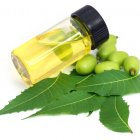 Make the Miraculous Neem Oil a Part of Your Daily Life: Discover the Numerous Uses of Neem Oil and How It Can Give You a Radiant Skin, Lustrous Hair and Overall Health and Wellbeing! (2021)
Make the Miraculous Neem Oil a Part of Your Daily Life: Discover the Numerous Uses of Neem Oil and How It Can Give You a Radiant Skin, Lustrous Hair and Overall Health and Wellbeing! (2021)
-
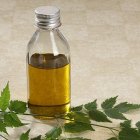 Ever Considered Neem Oil for Hair? Here is Why You Have to in 2020!
Ever Considered Neem Oil for Hair? Here is Why You Have to in 2020!
-
 Is Your Hair Fall Troubling You? Are You Tired of Thinning Hair? 8 Effective Home Remedies for Hair Growth and 4 Reasons Why You Might Be Losing Your Hair.
Is Your Hair Fall Troubling You? Are You Tired of Thinning Hair? 8 Effective Home Remedies for Hair Growth and 4 Reasons Why You Might Be Losing Your Hair.
What is Olive Oil?
Olive oil is believed to have originated in the region of Syria, Iran, and Palestine about 6000 years ago. From there it spread to the Mediterranean region and today, Spain alone fulfills 50% of the world’s Olive Oil demand. Olive oil is extracted from the Olive fruit by either a mechanical or chemical process and is considered excellent cooking oil. Moreover, it also has medicinal and religious significance in different countries since ancient times. Raw olives are crushed to a paste, then decanted and finally the oil is separated by centrifugation process.
Benefits of Olive Oil
Olive Oil contains healthy monounsaturated fats and it’s also packed with antioxidants which reduces the risk of chronic diseases. This oil has strong anti-inflammatory properties so regular use in cooking lowers the risk of heart disease, diabetes, and cancer, etc. Moreover, Olive Oil is helpful to cut risks of stroke, maybe effective to fight Alzheimer's disease, and can help treat Rheumatoid Arthritis.
A Multipurpose Oil
The varieties of olive oils mentioned above are meant for different culinary options. Extra virgin oil is appropriate for salads; Virgin olive oil is good for baking, sauté and can also be used in salads. Moreover, Virgin olive oil serves as a good option for body and hair massage. Refined Olive Oil is not suitable for salads, but only for cooking purposes. Pure Olive Oil is strictly meant for high heat cooking and light olive oil can be used for baking or cooking minus the olive flavor.
Great Skin Benefits
Apart from being edible oil, Olive oil has numerous benefits for your skin as well. It can help moisturize your skin by reducing water loss, hence improving the glow of the skin. The antioxidant properties of olive oil protect your skin against environmental factors like dust and pollution. Vitamin A, D, E, and K present in the oil prevents premature aging and the anti-inflammatory ingredients help to heal wounds faster. Olive oil is also effective in lifting makeup, especially waterproof makeup.
Types of Olive Oil
Olive oil can be differentiated into six categories based on its quality, degree of refinement, level of acidity, and smoke point (the temperature at which oil starts releasing smoke). These oils also have different odors and flavors as well and are used for cooking and other purposes.
Extra Virgin Olive Oil
The best olive oil in terms of health benefits, EVOO (Extra Virgin Olive Oil) is extracted by the traditional cold-pressed method which keeps the natural flavor, aroma, and nutrients intact. This oil has a maximum acidity of 0.8% which is directly proportional to the quantity of free fatty acids present in it. This olive oil is considered the best for consumption and can be taken without even mixing any other ingredient in it. Extra Virgin Olive Oil is expensive and generally used for drizzling, dipping, and salad dressings.
Virgin Olive Oil
Virgin Olive Oil is extracted through the same method as an extra virgin, but it’s an unrefined form due to which the natural flavors and aroma are stronger than the other varieties of Olive Oil. The taste is milder as compared to EVOO and the acidity level of Virgin Olive Oil is between 0.8 to 2 %. This oil is considered good for drizzling, sautéing, baking, for salads, or while making sauces, but is not meant for deep frying. Virgin Olive Oil is good for low heat cooking purposes.
Refined Olive Oil
Refined Olive Oil is extracted from ripe and black olive fruits and has the least amount of nutrients that are beneficial for health. This oil is obtained by refining methods that don’t alter the original glyceridic structure present in Olives, so they still have the nutrients of Olives, but is low quality as compared to Virgin Oil. Though refined olive oil can be projected as better than the Virgin Olive Oil, but with an acidity level below 3% and high smoke point, it’s considered good only for high-temperature cooking.
Pure Olive Oil
A blend of EVOO or virgin olive oil and refined olive oils, the name ‘Pure Olive Oil’ gives an impression of high-quality olive oil, but actually, it’s not. Whenever a batch of refined olive oil is not up to the prescribed standard, it’s mixed with better quality (virgin or extra virgin) oil. The resulting oil has an acidity level of less than 3.3%, better flavour and a higher concentration of vitamin E. Though the flavour is milder as compared to EVOO or Virgin Olive Oil, Pure Olive Oil is still considered good for baking, grilling, cooking, and frying. This oil is also used for preparing massage oils and herbal oils.
Olive Pomace Oil
Olive Pomace Oil is also known as Orujo Oil because it’s a blend of virgin olive oil mixed with a solid residue of olive oil called Orujo, which is obtained by chemical processes. It’s the least expensive and lowest quality olive oil suitable only for high heat cooking. As it’s mainly extracted from the left out of the olive fruit, hence, it does not have the health properties which are present in extra virgin or virgin olive oil. Apart from high heat frying, olive pomace oil is also used for cleaning purposes like furniture polish, etc.
Light Olive Oil
The light olive oil has a lighter odor, color, and a neutral flavor along with a higher smoke point. This oil is also refined using heat and chemical processes and has no less fat or calories than a virgin or refined olive oil. It’s a lesser quality oil meant for people who don’t like the olive flavor but still want to use it for deep frying purposes. Light Olive Oil has a longer shelf life than the other variants.
Side Effects of Olive Oil
Like most edible items, olive oil has its own share of side effects which can be caused by excess consumption or allergy to this oil. The major side effects which one may encounter are acne, allergy, skin rashes, not suitable for a baby or dry skin, blackheads, lowered blood sugar, gallbladder stones, diarrhea and lowered blood pressure, etc.
-
 From Usage in Skincare to Treating Wounds Quickly, Castor Oil Has a Lot of Applications You May Have Never Heard of: Benefits of Using Castor Oil (2021)
From Usage in Skincare to Treating Wounds Quickly, Castor Oil Has a Lot of Applications You May Have Never Heard of: Benefits of Using Castor Oil (2021)
-
 Make the Miraculous Neem Oil a Part of Your Daily Life: Discover the Numerous Uses of Neem Oil and How It Can Give You a Radiant Skin, Lustrous Hair and Overall Health and Wellbeing! (2021)
Make the Miraculous Neem Oil a Part of Your Daily Life: Discover the Numerous Uses of Neem Oil and How It Can Give You a Radiant Skin, Lustrous Hair and Overall Health and Wellbeing! (2021)
-
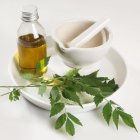 5 Best Neem Oil That Will Improve Your Skin with Regular Use Plus What Neem Oil Has to Offer for Our Healthy Skin in 2020
5 Best Neem Oil That Will Improve Your Skin with Regular Use Plus What Neem Oil Has to Offer for Our Healthy Skin in 2020
-
 Have You Ever Thought of Using Olive Oil for Something Other than Cooking or Eating(2020)? 10 Olive Oils for Smooth and Radiant Skin
Have You Ever Thought of Using Olive Oil for Something Other than Cooking or Eating(2020)? 10 Olive Oils for Smooth and Radiant Skin
-
 The Elixir Dermatologists Swear by(2020)! Top Argan Oil Brands in the Market and Benefits of Argan Oil for Skin!
The Elixir Dermatologists Swear by(2020)! Top Argan Oil Brands in the Market and Benefits of Argan Oil for Skin!
-
 From Usage in Skincare to Treating Wounds Quickly, Castor Oil Has a Lot of Applications You May Have Never Heard of: Benefits of Using Castor Oil (2021)
From Usage in Skincare to Treating Wounds Quickly, Castor Oil Has a Lot of Applications You May Have Never Heard of: Benefits of Using Castor Oil (2021)
-
 Ever Considered Neem Oil for Hair? Here is Why You Have to in 2020!
Ever Considered Neem Oil for Hair? Here is Why You Have to in 2020!
-
 5 Best Neem Oil That Will Improve Your Skin with Regular Use Plus What Neem Oil Has to Offer for Our Healthy Skin in 2020
5 Best Neem Oil That Will Improve Your Skin with Regular Use Plus What Neem Oil Has to Offer for Our Healthy Skin in 2020
-
 Have You Ever Thought of Using Olive Oil for Something Other than Cooking or Eating(2020)? 10 Olive Oils for Smooth and Radiant Skin
Have You Ever Thought of Using Olive Oil for Something Other than Cooking or Eating(2020)? 10 Olive Oils for Smooth and Radiant Skin
-
 Want to Have Thick and Long Hair Like Rapunzel? Guide on How to Use Flaxseeds for the Growth of Silky Smooth Hair.
Want to Have Thick and Long Hair Like Rapunzel? Guide on How to Use Flaxseeds for the Growth of Silky Smooth Hair.
Finding A Perfect Balance
Olive Oil is known for its various health benefits, and more people nowadays are integrating it into their lifestyles for this very reason. However, remember that as great as olive oil is, it is one of the many ways to reach a perfect balance of healthy living. So, while you are at it, add other facets of a healthy lifestyle in your daily routine as well like a good hour of workout and meditation, among many other things.

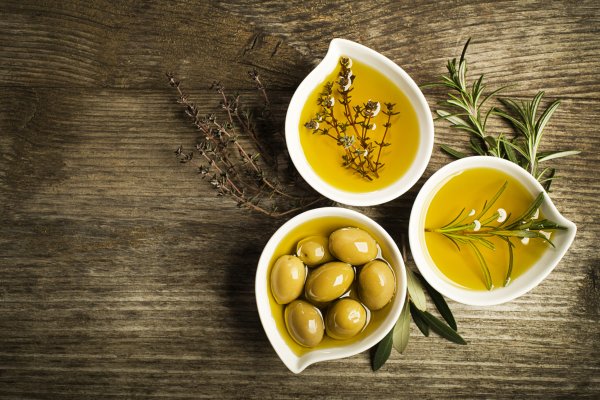

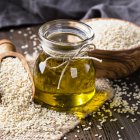

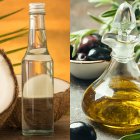
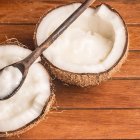
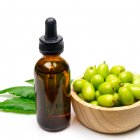
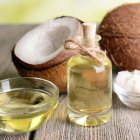

 Highlight the Best Facets of Your Incomparable Beauty: Discover the Best Face Highlighter Currently Available in India and Everything You Need to Know About Using Face Highlighters for Maximum Effect (2023)
Highlight the Best Facets of Your Incomparable Beauty: Discover the Best Face Highlighter Currently Available in India and Everything You Need to Know About Using Face Highlighters for Maximum Effect (2023)
 Forget the Blemishes and Get that Picture Perfect Flawless Radiance on Your Face: Check out the Best Foundations for Oily Skin Currently Available in India and Everything You Need to Know About Makeup Foundations (2023)
Forget the Blemishes and Get that Picture Perfect Flawless Radiance on Your Face: Check out the Best Foundations for Oily Skin Currently Available in India and Everything You Need to Know About Makeup Foundations (2023)
 Make Your Presence Felt Wherever You Go: Discover the Best Perfumes Under 2000 for Both Men and Women to Announce Your Arrival and Make Any Occasion Memorable (2023)
Make Your Presence Felt Wherever You Go: Discover the Best Perfumes Under 2000 for Both Men and Women to Announce Your Arrival and Make Any Occasion Memorable (2023)
 Protect Your Oily Skin from the Harmful Rays of the Sun: Discover the Best Gel Based Sunscreens for Oily Skin and Everything You Need to Know Before Buying One (2023)
Protect Your Oily Skin from the Harmful Rays of the Sun: Discover the Best Gel Based Sunscreens for Oily Skin and Everything You Need to Know Before Buying One (2023)
 Minor Blemishes and Wrinkles Affecting Your Confidence? Check out the Best BB Creams to Conceal Your Worries and Nourish Your Skin to Restore the Healthy, Radiant and Glowing Complexion Back Again (2023)
Minor Blemishes and Wrinkles Affecting Your Confidence? Check out the Best BB Creams to Conceal Your Worries and Nourish Your Skin to Restore the Healthy, Radiant and Glowing Complexion Back Again (2023)
